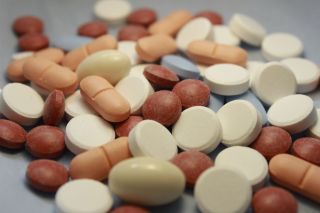Nootropics
Addressing the Stimulant Shortage
The difficulties in getting medications to people who benefit from them.
Posted April 17, 2023 Reviewed by Lybi Ma
Key points
- There is a shortage of all stimulant medications, and it's not a manufacturing issue.
- People who would benefit from them can't get their medication.
- This is affecting many people who are consequently not able to focus well, with personal and societal consequences.
- We hope that our suggestions will help resolve this.
In the last six months, many ADHD patients have been having trouble filling medication prescriptions. The stimulant shortage started out as a manufacturing problem for one medication—one of the generic versions of Adderall. However, it has since ballooned into a crisis of supply and demand affecting essentially all stimulant medications.
Prior to the last couple of decades, it was unusual for an adult to be diagnosed with this disorder, because it was commonly (though incorrectly) believed that ADHD tended to go away after childhood. ADHD is now understood to be a lifelong condition commonly creating challenges across the lifespan. Not only is it problematic on its own, but it is also often comorbid with other common psychiatric conditions, such as anxiety and depression, in both kids and adults.
The COVID pandemic increased the demand for ADHD diagnosis and medication because of new challenges it created for adults trying to work from home while juggling other tasks and distractions, as well as kids trying to do schoolwork without the structure and presence of in-person teachers and classmates. Another potential driver might be our “crazy-busy” lifestyle, which includes an increasing diet of electronic distractions and screens.
The lack of a biological test for ADHD, and the lack of a consensus standard around the utilization of objective psychometric tests for ADHD, contributes to a perception that the disorder, which is undoubtedly a significant challenge for many, is instead “made up” or simply a matter of subjective opinion. But no matter the causes, what is not in dispute is that the diagnosis of ADHD and the use of stimulant medications to treat it has been rising, especially among adults, and that there is no sign of a slowdown.
A lot of people are:
- reporting significant daily challenges from poor attention
- wanting medical assistance to address these challenges
ADHD is a disorder in regulating attention, impulsivity, hyperactivity, and according to recent research, certain types of emotional reactivity. This type of regulation is an important factor not just for getting “A’s” in school when you’re a kid, but for virtually every aspect of life into adulthood.
It can make the difference between life and death while driving. It can make a difference in relationships: “You never listen” has prompted many breakups. It is important to school success, yes, but also to success at work. It can make the difference between holding or even excelling at your job, versus being chronically or serially unemployed.
It is a significant contributor to alcoholism, other types of drug abuse, exposure to all kinds of trauma, and risk-taking behaviors. These behaviors can result in many types of medical problems as well as early pregnancy. The growth in stimulant prescriptions is a reflection of people wanting to address such challenges in their lives—and we believe that is good for them personally and also for society as a whole.

As physicians, we are thrilled when people ask for help with their attention—because we can help them. The stimulant medications (that is, chemicals found in Ritalin, Adderall, and their derivatives) that doctors have to treat poor attention are among the most effective and useful in all of pharmacopeia, certainly when it comes to behavioral conditions. They work extremely well (non-stimulants also work, but many people with ADHD find them less effective). If you’re an ADHD patient, and we’re your doctor: you’ve got a problem, we’ve got a solution—we should be good to go.
Except we’re not good to go. Due to stimulant medications being classified as having a high abuse potential, they are tightly regulated. Pharmacies are only allowed to sell a certain amount per month. At this point, given the growth in people seeking help for these challenges, demand is outpacing these allotted amounts.
And thus, there is a general stimulant shortage. This leads to significant difficulties in getting medications to people who benefit from them. Some of our patients have been out for months.
The thing is, stimulants are not actually so problematic for addiction at the doses and in the forms typically prescribed for ADHD. The classification of stimulants as having a high potential for abuse is based on what can happen when very high doses of immediate-acting stimulants are ingested, inhaled, or injected.
Yes, you can abuse stimulants in that way and get addicted to them: Crystal meth abuse is a huge problem—but crystal meth is a street drug, not a prescription medication, and Adderall and Ritalin are not crystal meth. At doses and in the forms commonly used to treat ADHD, the addiction potential for prescription stimulants is low and manageable.
Our patients easily stop using their stimulants altogether, and many more use them only intermittently—a few days per week. Many people with ADHD take these medications only as needed Monday-Friday (for school or work) and routinely skip taking them on weekends and vacations. Unlike opioids, where an almost bottomless tolerance can lead to a need for greater and greater doses over time, the effective dose of stimulant medication for any individual ADHD patient tends to remain stable once clinically established in the first few months of treatment—stable over decades or even over an entire lifetime.
In short, the addiction potential of prescription stimulants at doses used for ADHD is significantly less than that of coffee or nicotine (the world’s most common non-prescription stimulants, which unfortunately don’t work well for ADHD). If you doubt that, try drinking espresso or smoking cigarettes just on weekdays and not at all on Saturdays and Sundays—the way many ADHDers routinely take prescription stimulants.
Stimulants come in both long-acting (extended-release) and short-acting (immediate-release) forms. The short-acting forms tend to have slightly higher addiction potential (although still low at prescribed doses). The long-acting forms tend to be less addictive in general, and some have been manufactured in a way that renders them even less so.
Yet all of these medications are classified and regulated exactly the same—as though they are as addictive as opioid medications and more addictive than many other commonly prescribed psychiatric medications, such as benzodiazepine tranquilizers (Xanax, Ativan, Valium). Yet the abuse and addiction of prescription tranquilizers are arguably more of a clinical and societal problem than that of prescription stimulant drugs.
Stimulants usually can’t be prescribed, even at a completely steady dose, for more than 30 days at a time, no refills are allowed (they can’t be put on auto-refill) and prescriptions can’t be transferred from pharmacy to pharmacy (which has been extremely problematic for patients trying to obtain their regular medications amidst the current supply shortage).
We should partially down-regulate the long-acting prescription stimulant formulations so that they could be prescribed more easily. These prescriptions could still be monitored along with other controlled substances—but at a level that is more appropriate to their actual observed abuse potential.
Aside from being more clinically appropriate, this would likely lead to an increase in the percentage of ADHD patients taking long-acting stimulant formulations at the expense of the arguably more problematic short-acting forms. Presumably, this is desirable from a public-health safety perspective.




